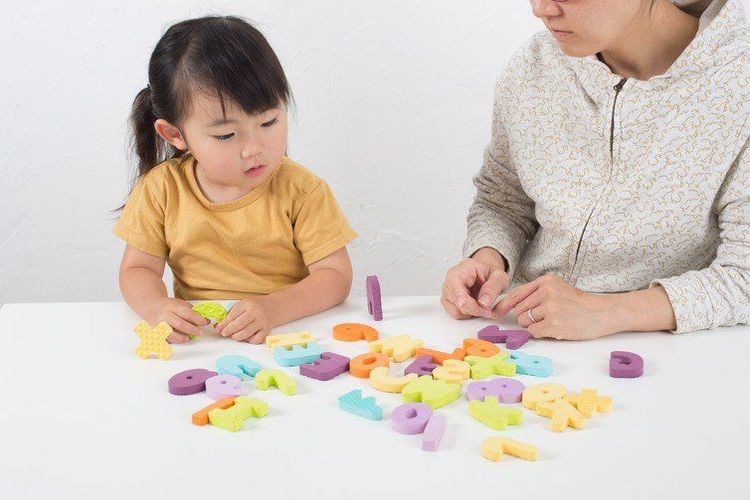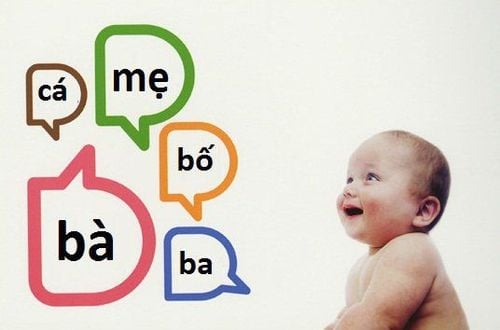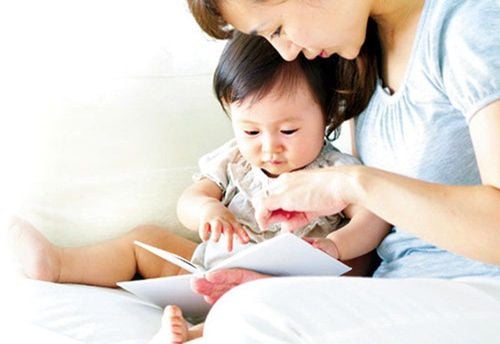This is an automatically translated article.
Posted by Master Nguyen Thi Yen - Pediatric Speech Therapist - Vinmec Time City International HospitalFrom 1 to 3 years old, children will learn many new words and their usage. By age 2, most babies already have a large vocabulary and can put words together into 2-3 word phrases to express their needs and ideas for play. Children know how to use many gestures, gestures combined with words to communicate effectively. At this time, if children have a lot of experience with language, their vocabulary will be extremely rich. Therefore, parents should always be with their children to have fun and explore, because this is the golden period for children to learn to speak.
1. The period from 12 to 15 months old
1.1. Language - communication characteristics of children The period from 12 to 15 months old is the period when children learn to speak. Accordingly, children were able to speak and use consistently a few single words related to their own needs such as: mother, carry, go, etc. In addition to learning to speak, the child also knows how to imitate words and phrases. simple actions such as: waving bye bye, blowing kisses,...
Children can follow simple and familiar requests such as: give the ball to mom, come over, sit down,... even children can understand about 25 words or more.
1.2. What can parents or caregivers do? In addition to learning to say simple words, at this stage your baby can learn to say animals. Therefore, parents should help children familiarize themselves with and name objects that children do not know. For example, when your child is thirsty, you can point to the cup and say “cup” or “cup of water.” If your child likes juice, you can say "orange juice" or "juice". Be patient and give your child more time to memorize the names of all the objects you introduce.
You can introduce children to a few interesting books, suitable for their age and interests such as: books about fruits, transportation, books about animals, story books from 4 -8 pages, flip book, book rustle... Spending time reading and showing your child the pictures in the book is a great way to introduce children to new objects. Besides, parents should also create opportunities, encourage and wait for children to talk about things they care about. For example, when your child sees a picture of a dog in a book and says "dog," smile, clap, and praise her: "That's right, there's a dog. This dog is huge.”
Take care of your child's interests and give them the opportunity to learn to talk about what they like. For example, if your child brings a car, wait patiently for him to tell you about the car. You can give your child more information about the car, but make sure he gets to know his ideas first. For example, if your child says “car,” you might say, “Oh, a big red fire truck.”
In addition, parents and carers can also provide supplies and give children choices. Ask your child “Do you want milk or juice?”; “Which shirt do you want to wear?”; "Do you want to play fire truck or garbage truck?" You can also introduce and guide your child to pretend play with favorite dolls, animals or toys. Let's make it a real story. For example: "The fire truck has gone to fight the fire, send the ambulance to save the injured."
MORE: Fun activities to promote children's speaking skills

Cha mẹ có thể lựa chọn phương pháp dạy trẻ học nói
2. The period from 15 to 18 months old
2.1. Language - communication characteristics of children In addition to learning to speak, from 15 to 18 months old, children can:
Children know how to combine words and gestures to communicate. Children show an interest in books and the pictures contained in books. Children can name 1-2 body parts when asked. Children can understand about 50 words. 2.2. What can parents or caregivers do? Playing games with body parts will help children recognize and name their body parts. For example, you sing "Hey buddy, come see I have a nose, snort", then point your finger at your nose, and your child will look and imitate you. Do the activity with eyes, mouth, toes, fingers,... and turn it into an interactive parent-child game. You can use songs like: “Shoulders, toes, knees”, “Head, shoulders, knees and toes”; game Ant crawling,... children will love.
Besides, you can also play a game of brainstorming or hide a favorite toy. Then, help your child find it, show your surprised and excited expression with the found item, your child will surely be very excited.
When your child gives or shows you something, pause your work and talk to your child. For example, if your child gives you a car, you can say, “You want me to see this car. Oh, I love this red car."
SEE ALSO: How to communicate with your child before he can talk
3. Stage from 2 to 3 years old
3.1. Language - communication characteristics of children Besides learning to speak animals, at the age of 2 -3 years, children can:
Children know how to combine and string words together, know how to use phrases 2-3 words more often. Children can follow requests that include two unrelated steps such as: "give me the backpack and put on slippers". Children begin to learn to ask “what” and “where” questions. Children understand the concept of ownership. For example: child's shadow, mother's phone. Children begin to understand and answer more complex questions such as: "What do you do when you're hungry?" Children understand some concepts such as color, space (inside, outside),... Accordingly, children will like to participate in role-playing and imaginary activities. For example: pretending to be a firefighter going to fight a fire, pretending to take care of a doll,...

Cha mẹ có thể dạy trẻ học nói với cách kết hợp các hoạt động
You can teach your child to answer questions about his personal information such as: name, age,... You can increase your child's awareness and language by asking questions related to objects and toys that interest them such as: “How many cars do you have?”; “What shape is this tray?”,... Help your child learn to develop their play ideas and express them in a way that is easy to understand by asking open-ended questions such as: “Where are these cars going? so? Oh, if you go to the park, what do you think you will bring?”... After asking a question, wait and listen to your child's answer. If your child comes up with some ideas, help her "refinish" the sentence so it's easy to understand. If your child is confused, you can offer some suggestions and guide him to add ideas to the story. Example: “I think you will need to bring more water. Do you think you should bring some more bread? Should you bring milk or fruit?”... Read a favorite book with your child and ask them to retell it to their parents or grandparents. You might suggest, “What happened to you pig?” to motivate your child to recall and describe what he knows. Going to the library with your child to buy books or go to the library is a fun way to help foster a love of books. Taking your child out with the whole family or a group of peers helps them learn and connect with others. Play role-playing games or pretend to be characters in a “story”. Try to create lots of new and unexpected “situations” to challenge and give your child the opportunity to learn and use the language they have learned. Schedule all activities and prepare before play, ensuring your child is fully engaged and experienced in the activity. For example: turn off the TV, the phone for children to play; prepare more equipment before starting to play,... Nurture your love of language and books right from the first years of your child's life, it will be a special gift you give your child. A little challenge in the journey to conquer the language will help your child's learning ability develop better.
Please dial HOTLINE for more information or register for an appointment HERE. Download MyVinmec app to make appointments faster and to manage your bookings easily.













